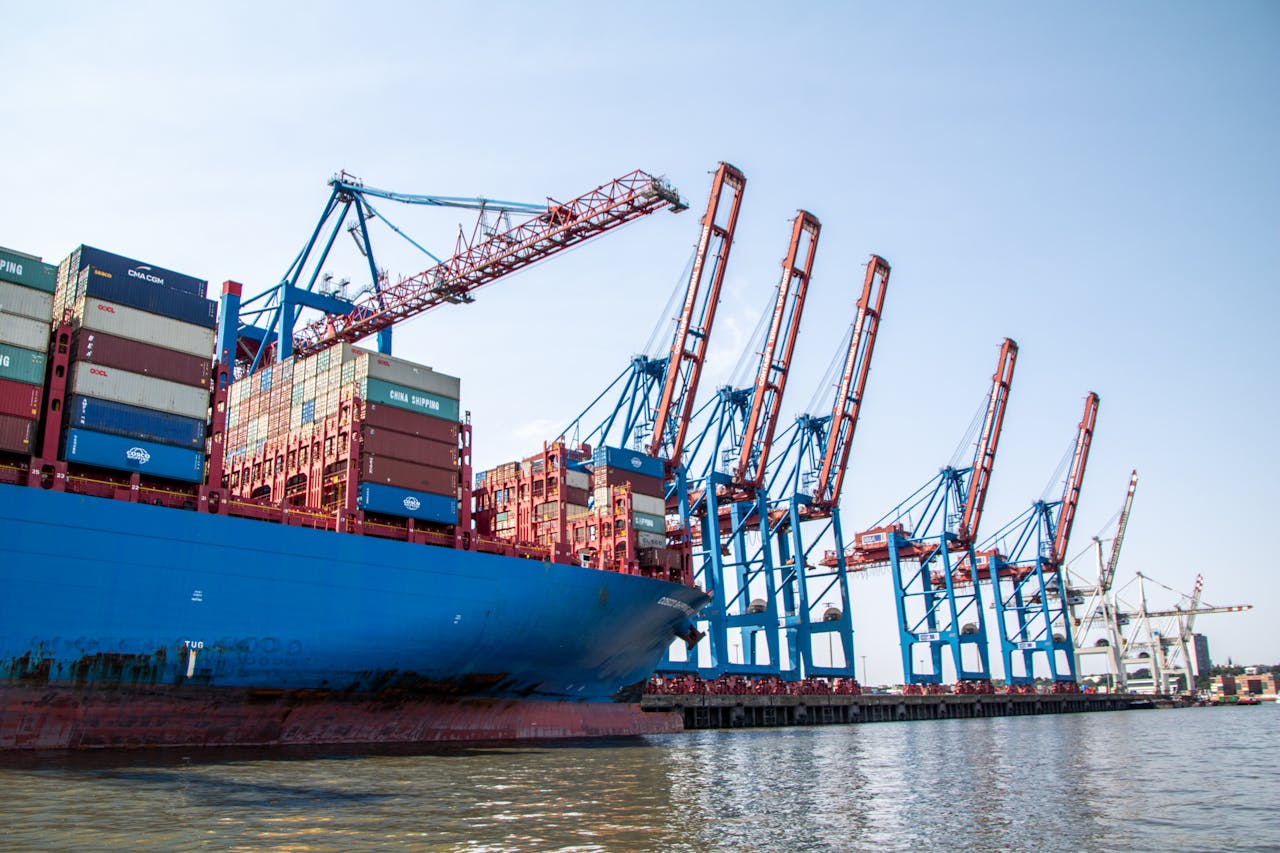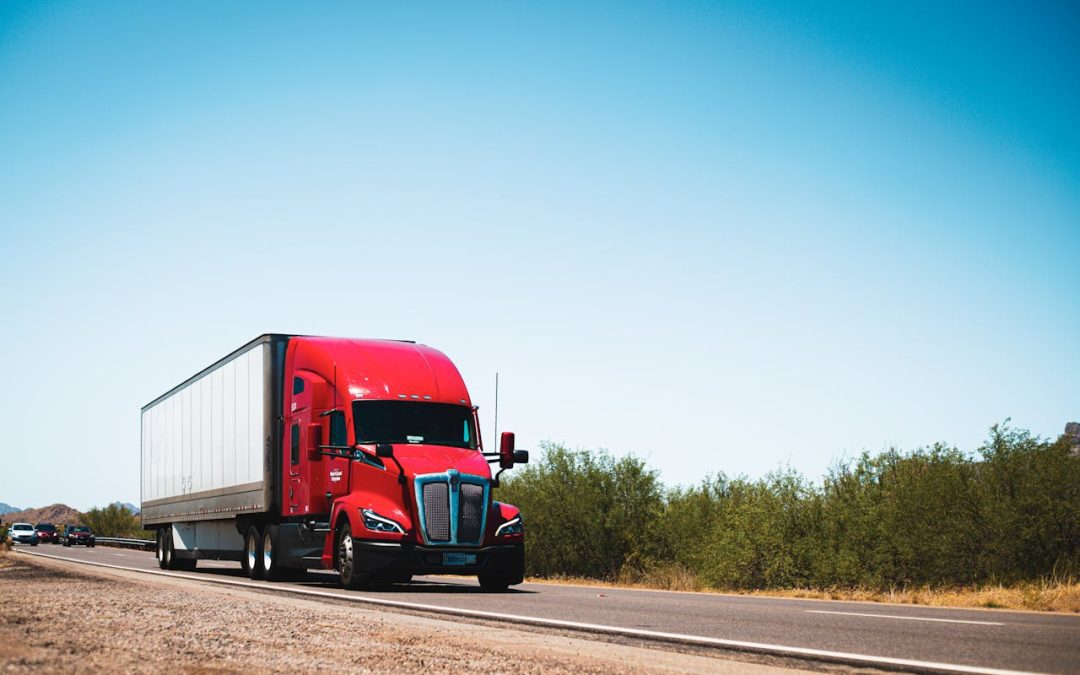Cutting your logistics carbon footprint is no longer optional. It’s essential.
Your logistics carbon footprint is the total greenhouse gas emissions produced when you transport and store your goods. Lorries on the road, container vessels and even warehouse emissions all contribute.
In today’s world of shipping and logistics, clients are expecting greener services, and businesses that don’t deliver risk losing trust and contracts. Reducing your logistics carbon footprint not only lowers the environmental impact your actions have on the planet, but it is also fast becoming a regulatory requirement.
In this blog, we explore practical strategies businesses can use to cut their logistics carbon footprint and stay ahead of expectations.
Understanding the Impact of Freight on Carbon Emissions
Freight transport is a major contributor to greenhouse gas emissions globally, accounting for 8% of the carbon dioxide entering our atmosphere; 11% if you include ports and warehouses (International Energy Agency).
Different modes of freight have different emission profiles:
- Sea freight emits the lowest amount of CO₂ per tonne-kilometre at 0.0403 kg.
- Rail transport also sits on the greener side, emitting around 0.1048 kg CO₂ per tonne-kilometre.
- Trucks moving goods on roads around the world produce more carbon dioxide, approximately 0.1693 kg CO₂ per tonne-kilometre.
- Air freight, though fast and secure, relies heavily on fossil fuels, making it the top pollutant. Sending goods via plane emits around 0.69 kg CO₂ per tonne-km for long-haul, and 0.82 kg CO₂ per tonne-km for short-haul.
Strategies to Reduce Your Logistics Carbon Footprint
There are several ways to cut your emissions and minimise your impact on the planet whilst improving the efficiency of your logistics operation.
1. Optimise Routes & Loads
Empty miles burn fuel unnecessarily, producing more emissions. Using route-planning technology and loading your fleet to its maximum capacity optimises your efficiency and cuts down on your logistics carbon footprint.
2. Choose the Right Freight Mode
Different freight modes have different environmental impacts. As we saw in the previous section, sea and rail tend to come up trumps per tonne-kilometre, and air freight produces the highest emissions. Road freight sits somewhere in the middle. Identifying the right freight mode means balancing speed and cost with environmental impact. Read our blog on choosing freight modes.
3. Consolidate Shipments
Fewer, fuller loads reduce the number of miles travelled, cutting down on fuel and minimising emissions. This works fantastically for businesses sending smaller, regular shipments. Read more about freight consolidation here.
4. Invest in Sustainable Packaging
Lightweight, reusable and recyclable packaging brings down the overall weight of your consignment, improving your green credentials through recyclability and fewer CO2 emissions spent shipping it.
5. Partner with Green-Minded Freight Forwarders
Work with a forwarder who is invested in sustainability and efficiency. Just like us! At Millennium, we focus on proactive planning, efficient routing and tailored shipping solutions, helping our clients to cut down on costs and emissions.
Real-World Examples
Let’s take a look at how this works out in the real world.
Example 1
One of Millennium’s clients, a UK manufacturing company, recently found that many of their shipments were leaving in half-full containers. To remedy this, they changed their approach, consolidated their shipments where possible and sent fewer, fuller loads, cutting the trips made by 25%.
Not only did their actions reduce their logistics carbon footprint, but they also brought down transport costs.
Example 2
Another of Millennium’s clients swapped non-urgent deliveries from air freight to sea freight. Whilst air freight is faster, it produces are far higher amount of carbon dioxide, and the company wanted to act greener to appeal more to their client base. Sea freight was both more eco-friendly and cheaper, improving their bottom line and boosting their reputation.

Regulations and Future Trends
Because of the climate crisis, rules and regulations about freight emissions are tightening. According to the International Transport Forum’s 2021 Transport Outlook, without stronger policies, freight emissions are projected to rise by 22% by 2050 compared to 2015.
Businesses that are actively reducing their logistics carbon footprint now are in a good position to adapt quickly, avoid penalties and gain business from sustainability-focused clients.
Global Shipping
From 2027, the IMO’s net-zero framework will regulate fuel-intensity limits and a global GHG pricing system. This will cover 85% of shipping emissions. Their targets include a 20-30% cut by 2030 and up to 80% by 2040. Read more here.
The EU has also added shipping to its Emissions Trading System and will require cleaner fuels under FuelEU Maritime from 2025.
UK Targets
The UK’s Transport Decarbonisation Plan aims for net-zero emissions by 2050, targeting a 20–30% cut by 2030 and 80% by 2040.
Lighter-weight new diesel HGVs will be phased out by 2035, with heavier vehicles leaving by 2040. The Zero Emission Road Freight Demonstrator is one programme that will support the integration of battery and hydrogen-powered trucks, with plans to achieve net-zero domestic shipping by 2050.
Carbon Reporting
Both EU and UK regulations now require larger businesses to report their supply chain emissions. Since the introduction of these rules, more companies are tracking and reducing their logistics carbon footprint.

How Millennium Cargo Helps Clients Reduce Emissions
Cutting your logistics carbon footprint doesn’t have to mean compromising on efficiency, speed or reliability. Here’s how Millennium can help.
Real People, Real Commitment
Millennium Cargo is a family-run business with a strong focus on gold-standard customer service and efficiency. We build real, lasting relationships with our clients, taking time to understand your shipping needs.
Expert Advice on Greener Solutions
Our friendly team of experts can help you find out the most efficient way of getting your goods from A to B whilst reducing your logistics carbon footprint. Whether it’s switching modes of transport, consolidating shipments or optimising routes, Millennium has the know-how.
A Trusted, Green-Minded Network
We work with carriers and service providers who meet high operational and environmental standards, ensuring that efficiency, reliability, and sustainability are at the forefront of every stage.
Start Minimising Your Logistics Carbon Footprint Today
Carbon-neutral shipping is the dream, and while we get there, improved freight sustainability is achievable. Without compromising the service you provide to your clients. With the right strategies and a trusted freight forwarder at your side, you can cut your emissions – and your costs – whilst maintaining reliability and speed.
Ready to move goods more sustainably? Get in touch with Millennium Cargo for tailored emissions reduction strategies that work for your business (and the planet).

